Your cart is empty.
Is Audio Surveillance Legal in the Workplace?
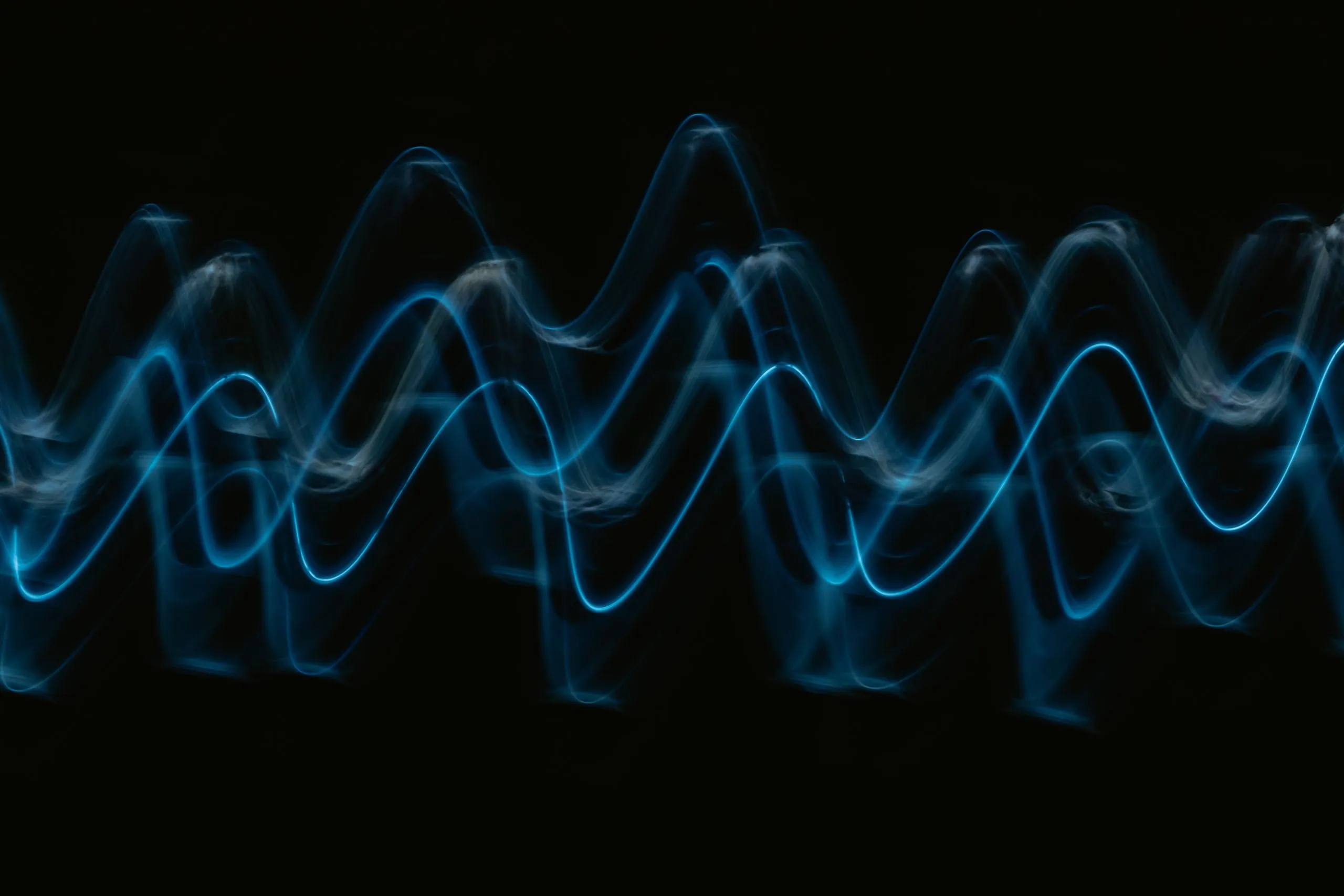
In the modern age of technology, it is becoming increasingly common for businesses to implement surveillance systems in the workplace. While video surveillance is a common aspect of these systems, audio surveillance is also frequently used to monitor employee activity. But, is audio surveillance legal in the workplace?
The legalities surrounding audio surveillance in the workplace can be complex and vary by jurisdiction. It is important for businesses to understand the laws and regulations surrounding audio surveillance in order to ensure that they are complying with the law and protecting the privacy of their employees.
In this blog, we will delve into the legalities of audio surveillance in the workplace and provide some tips on how businesses can ensure that they are operating within the boundaries of the law.
Is Audio Surveillance Legal in the Workplace: Definition of Audio Surveillance
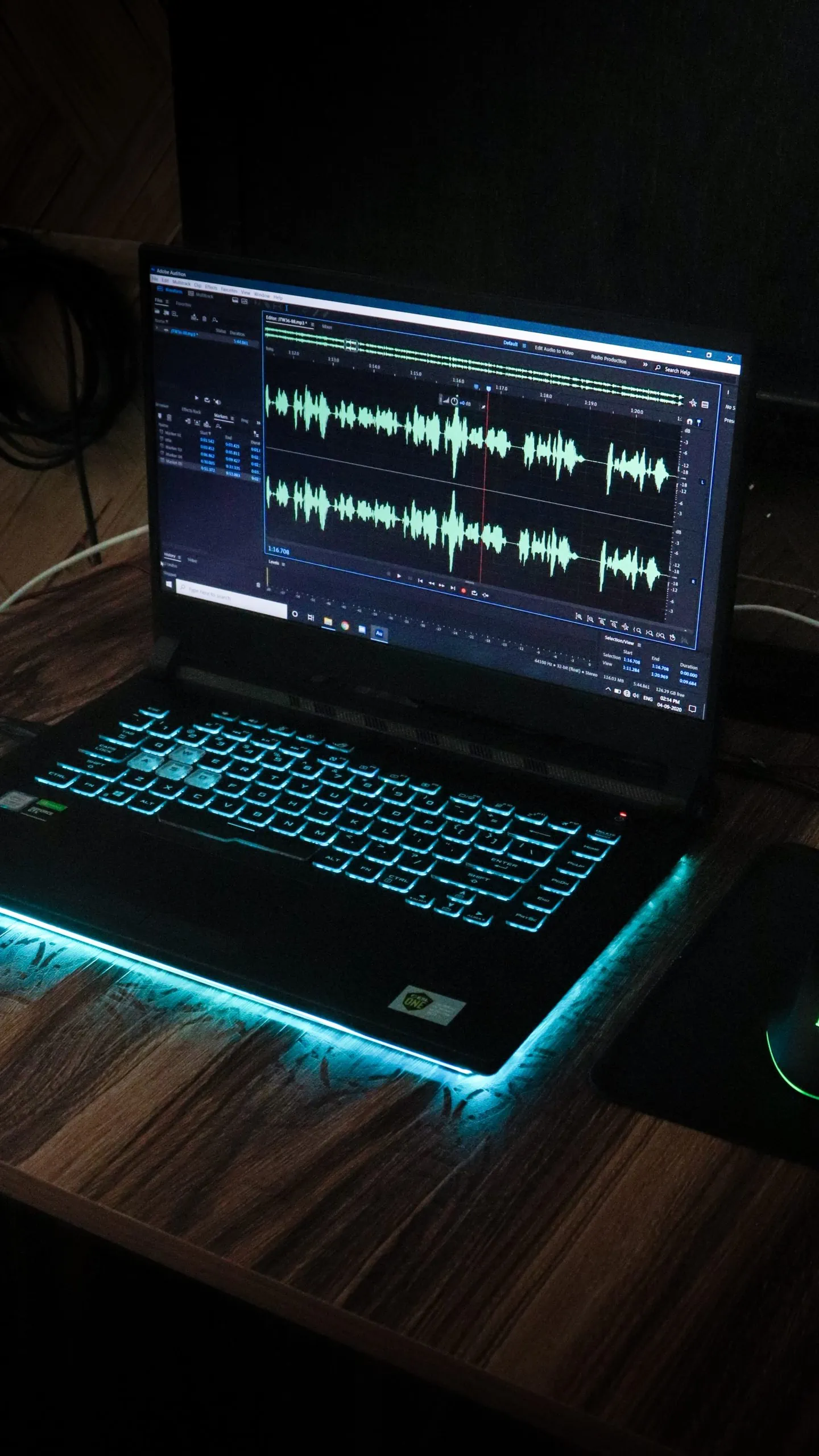
Audio surveillance in the workplace refers to the recording of conversations or sounds within a workplace environment. This can include phone conversations, in-person conversations, and other sounds within the workplace.
Understanding audio surveillance laws in the workplace is important for both employers and employees. These laws can vary by state and country, and it’s important to be aware of the specific regulations in your location.
In general, audio surveillance in the workplace is a sensitive topic as it involves the privacy of employees. It’s important for employers to consider the legal and ethical implications of audio surveillance and to have clear policies in place to ensure compliance with the law.
For employees, understanding audio surveillance laws in the workplace can help you to protect your privacy and ensure that your rights are not being violated. It’s important to be aware of your employer’s audio surveillance policies and to know your rights when it comes to being recorded at work.
Is Audio Surveillance Legal in the Workplace: An Overview of Audio Surveillance Laws
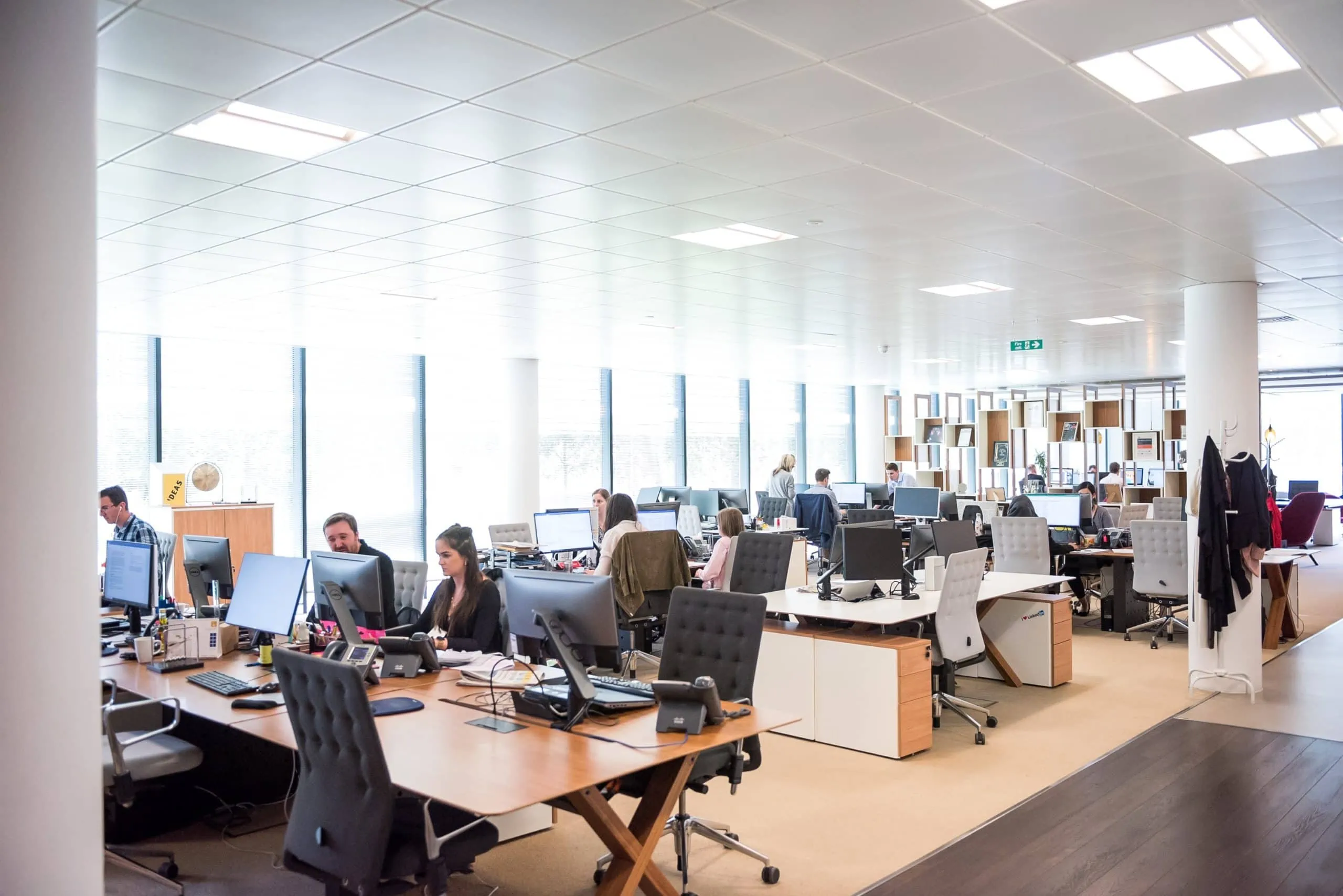
In the United States, audio surveillance in the workplace is generally allowed, but there are some federal and state laws that regulate it.
Federal Laws Regulating Audio Surveillance Legality in the Workplace
At the federal level, the main law that regulates audio surveillance in the workplace is the Electronic Communications Privacy Act (ECPA). The ECPA prohibits the interception of electronic communications without the consent of at least one of the parties to the communication. However, there are some exceptions to this rule, including the “business extension” exception, which allows employers to intercept calls made on company-owned phones if the interception is for the purpose of business.
State Laws Regulating Audio Surveillance Legality in the Workplace
There are also a number of state laws that regulate audio surveillance in the workplace. These laws vary from state to state and may be more or less restrictive than the ECPA. For example, some states require employers to give notice to employees that they may be monitored, while others require the consent of all parties to the communication.
Overall, it is important for employers to be aware of both federal and state laws when it comes to audio surveillance in the workplace. It is generally a good idea for employers to have a written policy in place that outlines the circumstances under which audio surveillance is allowed, and to make sure that all employees are aware of this policy.
Is Audio Surveillance Legal in the Workplace: Factors that Impact Legality of Audio Surveillance

There are several factors that can impact the legality of audio surveillance in the workplace. These include:
- The purpose of the surveillance: Audio surveillance is generally more likely to be legal if it is for a legitimate business purpose, such as to ensure the safety of employees or to monitor the quality of customer service.
- The method of surveillance: The ECPA prohibits the interception of electronic communications without the consent of at least one of the parties to the communication. This means that if an employer intercepts a phone call or records a conversation without the knowledge of one of the parties, it could be considered illegal.
- The location of the surveillance: Some states have laws that regulate audio surveillance in certain locations, such as restrooms or break rooms. Employers should be aware of these laws and ensure that they are not breaking them.
- The notice given to employees: Some states require employers to give notice to employees that they may be monitored. This can be in the form of a notice posted in the workplace or a provision in the employee handbook.
- The consent of the parties: Some states require the consent of all parties to the communication in order for audio surveillance to be legal. This means that if an employer records a conversation without the knowledge of one of the parties, it could be considered illegal.
Overall, it is important for employers to be aware of the various factors that can impact the legality of audio surveillance in the workplace and to ensure that they are in compliance with all relevant laws.
Is Audio Surveillance Legal in the Workplace: The Best Practices for Audio Surveillance

If an employer is considering implementing audio surveillance in the workplace, there are a few best practices that should be followed to ensure that it is done legally and ethically:
- Have a legitimate business purpose: Audio surveillance should only be used for a legitimate business purpose.
- Obtain consent: If possible, it is best to obtain the consent of all parties to the communication before recording it. This can help to ensure that the surveillance is legal and avoids any potential misunderstandings or hard feelings.
- Give notice: Some states require employers to give notice to employees that they may be monitored. This can be in the form of a notice posted in the workplace or a provision in the employee handbook.
- Limit the scope of the surveillance: Audio surveillance should be limited to the specific purpose for which it is being used and should not be used to monitor employees unnecessarily.
- Protect the recordings: Any recordings that are made should be kept secure and should only be accessed by authorized personnel.
By following these best practices, employers can ensure that audio surveillance in the workplace is done in a legal and ethical manner.
Is Audio Surveillance Legal in the Workplace: An Introduction to Verkada
Here at Monarch, we will work with you to help design a security system that abides by the rules regulating audio surveillance in the workplace. Together, we will design, implement, and oversee a security infrastructure for both safety and convenience.
Verkada offers a wide range of security products, including facial recognition cameras, access control, intrusion sensors and professional monitoring. All Verkada devices integrate with each other and are managed from a single cloud dashboard. Consider the following features of all Verkada devices:
Simple to Use
- Solid-state Storage (SSD): No NVR, DVR, or server is required. This means you pay for what you use – and that’s all. This reduces any extra overhead operations and the associated expenses,
- Regular, Automatic Software Updates: No need to worry about if your devices are working properly or are up-to-date with our Verkada devices.
- Simple Plug-and-Play Install: Just a standard Ethernet cable is required for the cameras to be brought online and fully operational within minutes.
- Accessible Anywhere, Anytime: Access archived or live feed videos on any device or browser
- Time lapse: Watch a day of footage in under 30 seconds with timelapses.
- Floor Plan: Quickly respond to incidents with real-time motion plotting.
Scalable
- Unlimited Storage on Camera and Cloud: Reduce your organizations’ liability risk with unlimited cloud archiving offered by Verkada cameras.
- Unlimited Users Allowed: You can easily authorize admins access to an unlimited number of users.
- Infinitely Scalable: No matter how large the facility is, we can help you keep everyone on the same page.
Limitlessly Smart
- AI-Based Video Analytics – People and Vehicle: Face detection, person of interest detection, and license plate detection are all available.
- Smart Filters: Search for specific people, vehicles, and objects without having to spend too much time scrubbing through footage.
- Live Alerts: Receive instant alerts in any meaningful event
- Shareable Live Feeds: Share your live feed via SMS. This is useful as you can send it to first responders in case of an emergency for dramatically reduced response time.
- 10-Year Warranty: Rest assured that your money is well protected
Is Audio Surveillance Legal in the Workplace: Cloud-Based Verkada Cameras
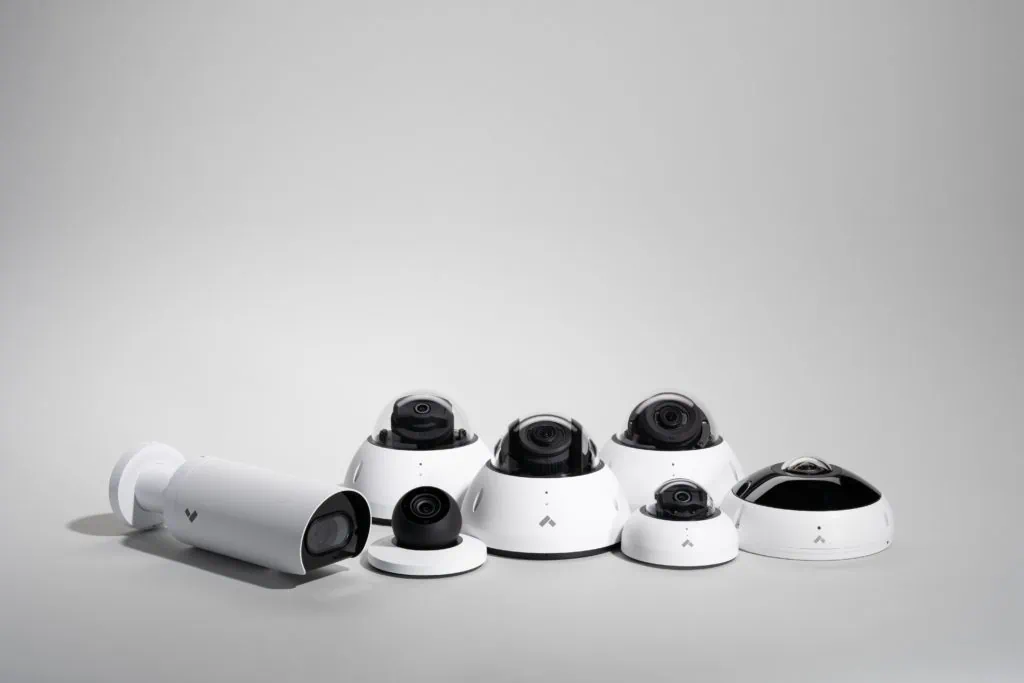
Verkada offers some of the best security cameras for legal audio surveillance in the workplace. These cameras include: the Verkada Indoor Dome Series, the Verkada Outdoor Dome Series, the Verkada Bullet Series, the Verkada Mini Series, and Verkada Fisheye Series.
Verkada Indoor Dome Series
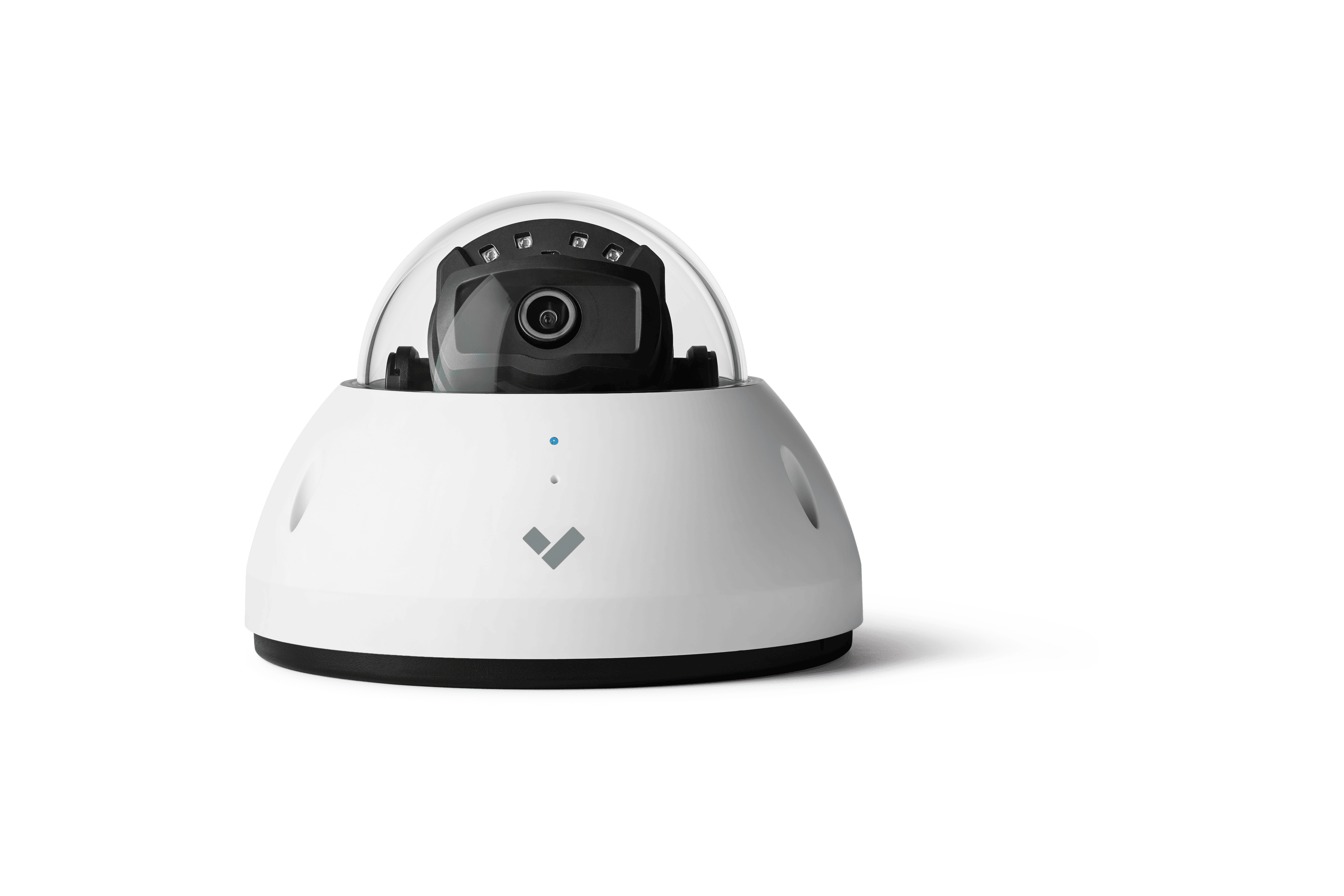
The Dome Series from Verkada provides enterprise-grade security in a variety of models suitable for any environment – indoors or outdoors. These hybrid cloud cameras have a long-lasting, vandal-resistant design and sensor resolutions of up to 4K. Thus, they are one of the best general-purpose security cameras for audio surveillance in the workplace.
All of the cameras in the Dome Series are straightforward to install and ready to use right out of the box without any additional configurations or downloads. Thus, organizations can quickly scale coverage and situational awareness across any number of locations using standard features such as data encryption in transit and at rest, onboard storage, and advanced motion-based insights.
There are models in the Indoor Dome Series: CD42, CD52, and C62.
| CD42 | CD52 | CD62 | |
| Type | Indoors | Indoors | Indoors |
| Image Resolution | 5MP | 5MP | 4K |
| Type of Lens | Fixed, with 3x Zoom Digitally | Zoom, with 3x Optical and Digital Zoom | Zoom, with 3x Optical and Digital Zoom |
| Standard Retention | Up to 365 Days | Up to 365 Days | Up to 90 Days |
| Standard Storage | Up to 2TB | Up to 2TB | Up to 2TB |
| Audio | Yes | Yes | Yes |
| IR Range | 15m | 30m | 30m |
| Rating | IK08 | IK08 | IK08 |
The Verkada Outdoor Dome Series
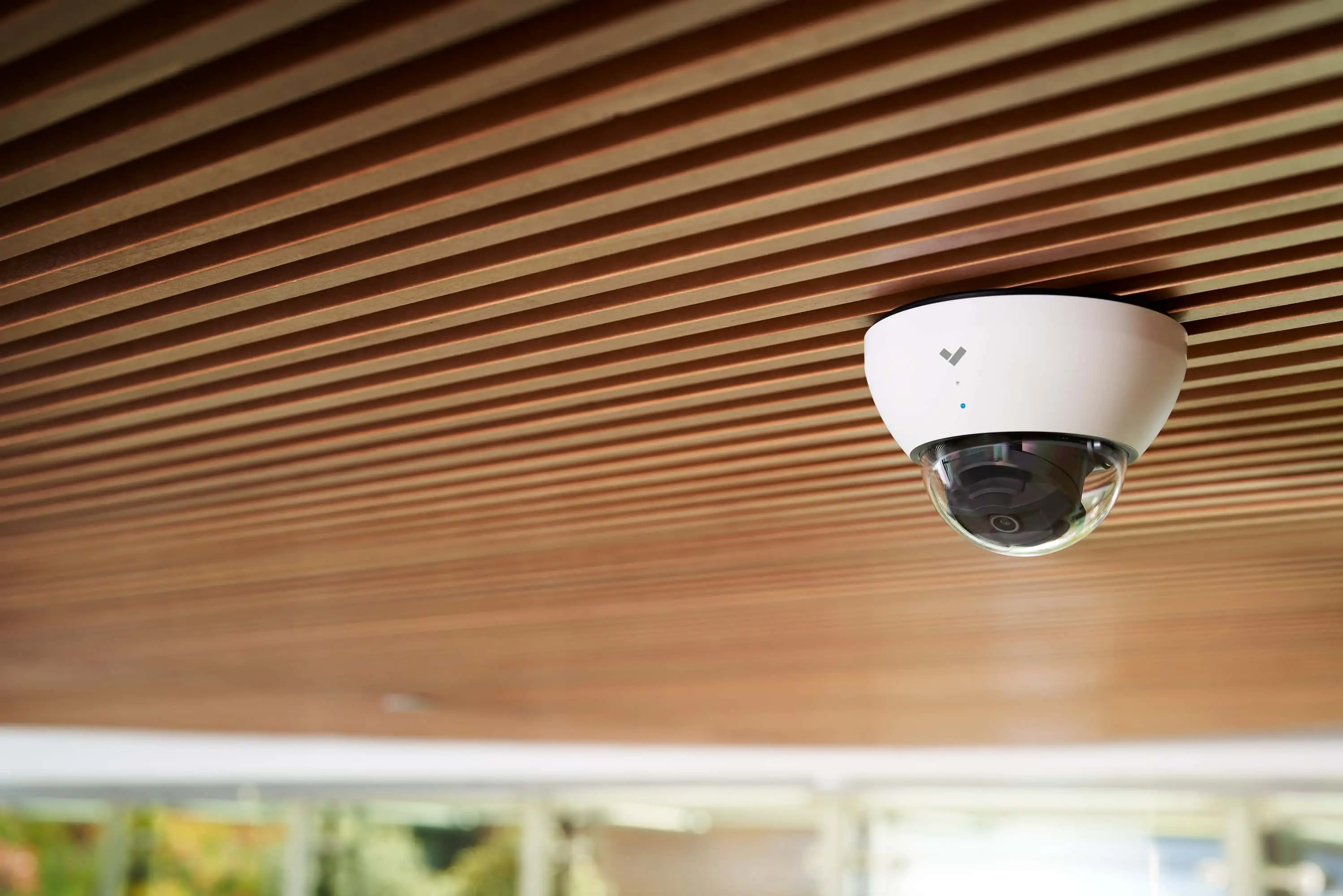
The Verkada Outdoor Dome Series is both weather- and tamper-resistant. Its capabilities function well even in areas with limited bandwidth and connectivity. They are perfect for monitoring the parking lot and the exterior of buildings (e.g., to capture key license plates). There are three three models in the Outdoor Dome Series: CD42-E, CD52-E, and C62-E.
| CD42-E | CD52-E | CD62-E | |
| Type | Outdoors | Outdoors | Outdoors |
| Image Resolution | 5MP | 5MP | 4K |
| Type of Lens | Fixed, with 3x Zoom Digitally | Zoom, with 3x Optical and Digital Zoom | Zoom, with 3x Optical and Digital Zoom |
| Standard Retention | Up to 365 Days | Up to 365 Days | Up to 90 Days |
| Standard Storage | Up to 2TB | Up to 2TB | Up to 2TB |
| Audio | Yes | Yes | Yes |
| IR Range | 15m | 30m | 30m |
| Rating | IK10 & IP67 | IK10 & IP67 | IK10 & IP67 |
The Verkada Bullet Series
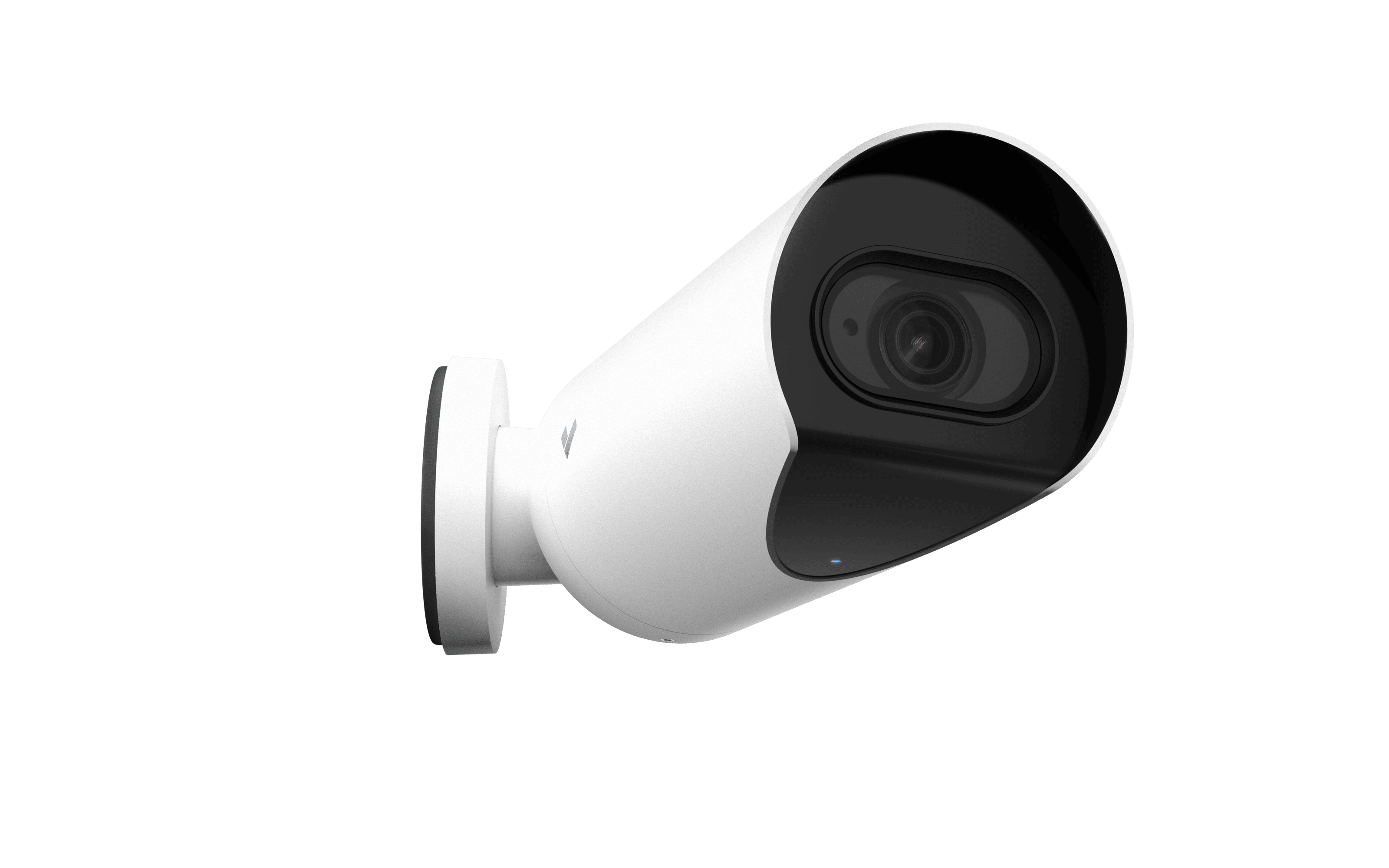
The Bullet Series from Verkada is built to withstand extreme conditions, and its conspicuous appearance is meant to deter would-be assailants.
These cameras’ lenses can be either wide-angle or telephoto, giving you the flexibility to capture a broad scene or focus in on distant details, respectively. In addition to being able to take clear pictures up to 50 feet away in the dark, they also have powerful long-range IR LEDs.
Bullet cameras are weather-resistant and can be used in the open air. They have a strong aluminum unibody with hermetically sealed internal electrical components. The exterior housing is protected from dust and water to an IP67 standard, and from vandalism, hail, and other flying objects to an IK10 standard. Thus, the bullet camera is an ideal security camera for legal audio surveillance in the workplace.
There are four three models in the Bullet Series: CB51-E, CB61-E, CB51-TE, CB61-TE.
| CB51-E | CB51-TE | CB61-E | CB61-TE | |
| Type | Indoor and/or Outdoor | Indoor and/or Outdoor | Indoor and/or Outdoor | Indoor and/or Outdoor |
| Image Resolution | 5MP | 5MP | 4K | 4K |
| Type of Lens | Zoom, with up to 3x Optical and Digital zoom | Telephoto Zoom, with 8-20mm focal length | Zoom, with up to 3x Optical and Digital zoom | Telephoto Zoom, with 8-20mm focal length |
| Standard Retention | Up to 2TB | Up to 2TB | Up to 2TB | Up to 2TB |
| Standard Storage | Up to 365 Days | Up to 365 Days | Up to 90 Days | Up to 90 Days |
| Audio | – | – | – | – |
| IR Range | 30m | 50m | 30m | 50m |
| Rating | IK10 & IP167 | IK10 & IP167 | IK10 & IP167 | IK10 & IP167 |
The Verkada Mini Series
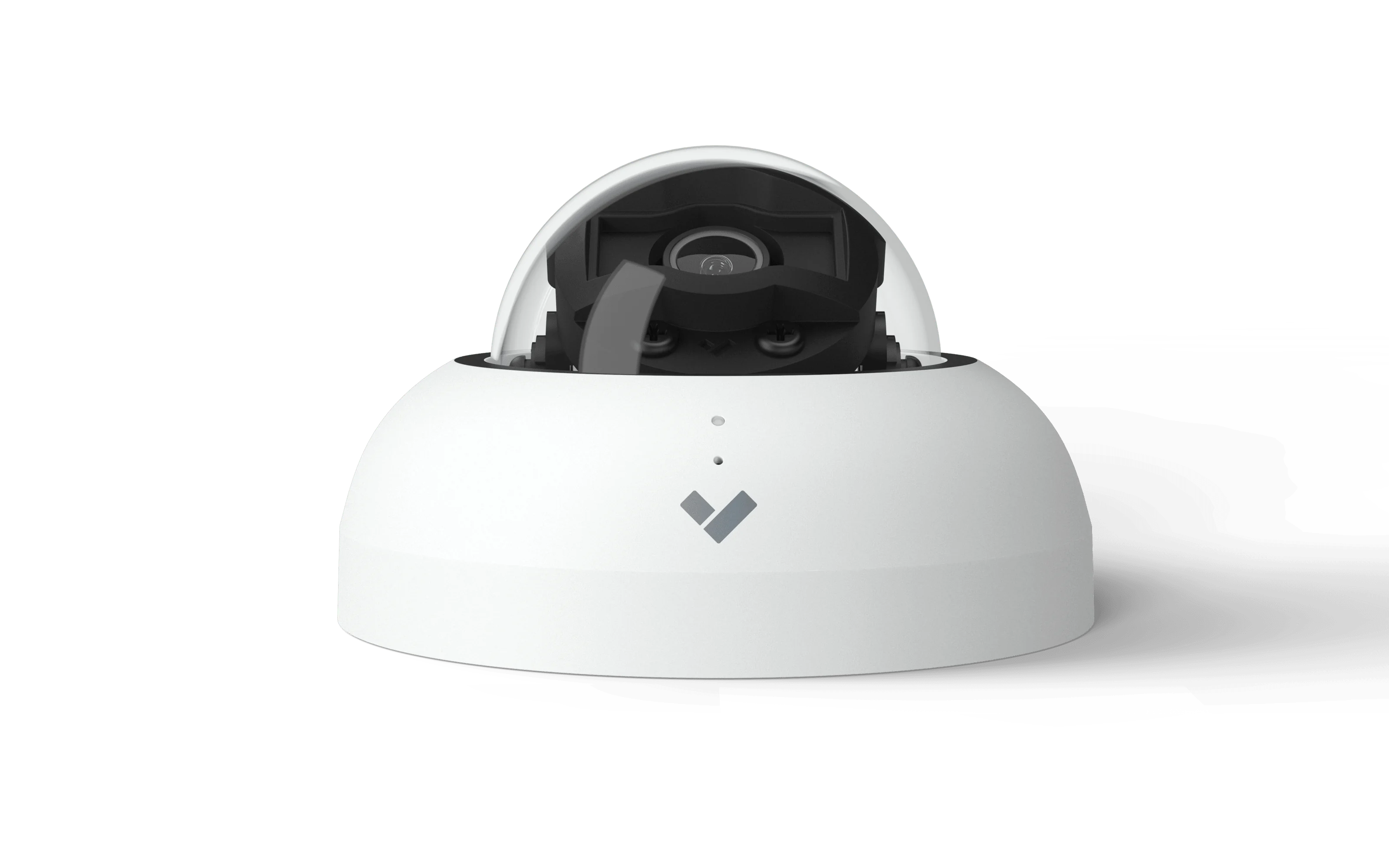
The Verkada Mini Series offers flexibility and high resolution for crystal clear footage. The Mini Camera is a compact size that can fit any space, anywhere. There are three three models in the Mini Series: CM41-S, CM41, and CM41-E.
| CM41-S | CM41 | CM41-E | |
| Type | Indoor | Indoor | Outdoor |
| Image Resolution | 5MP | 5MP | 5MP |
| Type of Lens | Fixed, with up to 3x Digital Zoom | Fixed, with up to 3x Digital Zoom | Fixed, with up to 3x Digital Zoom |
| Standard Retention | Up to 90 days | Up to 365 Days | Up to 365 Days |
| Standard Storage | Up to 385GB | Up to 2TB | Up to 2TB |
| Audio | – | Yes | – |
| IR Range | N/A | 15m | 15m |
| Rating | N/A | IK08 | IK10 & IP67 |
The Fisheye Camera
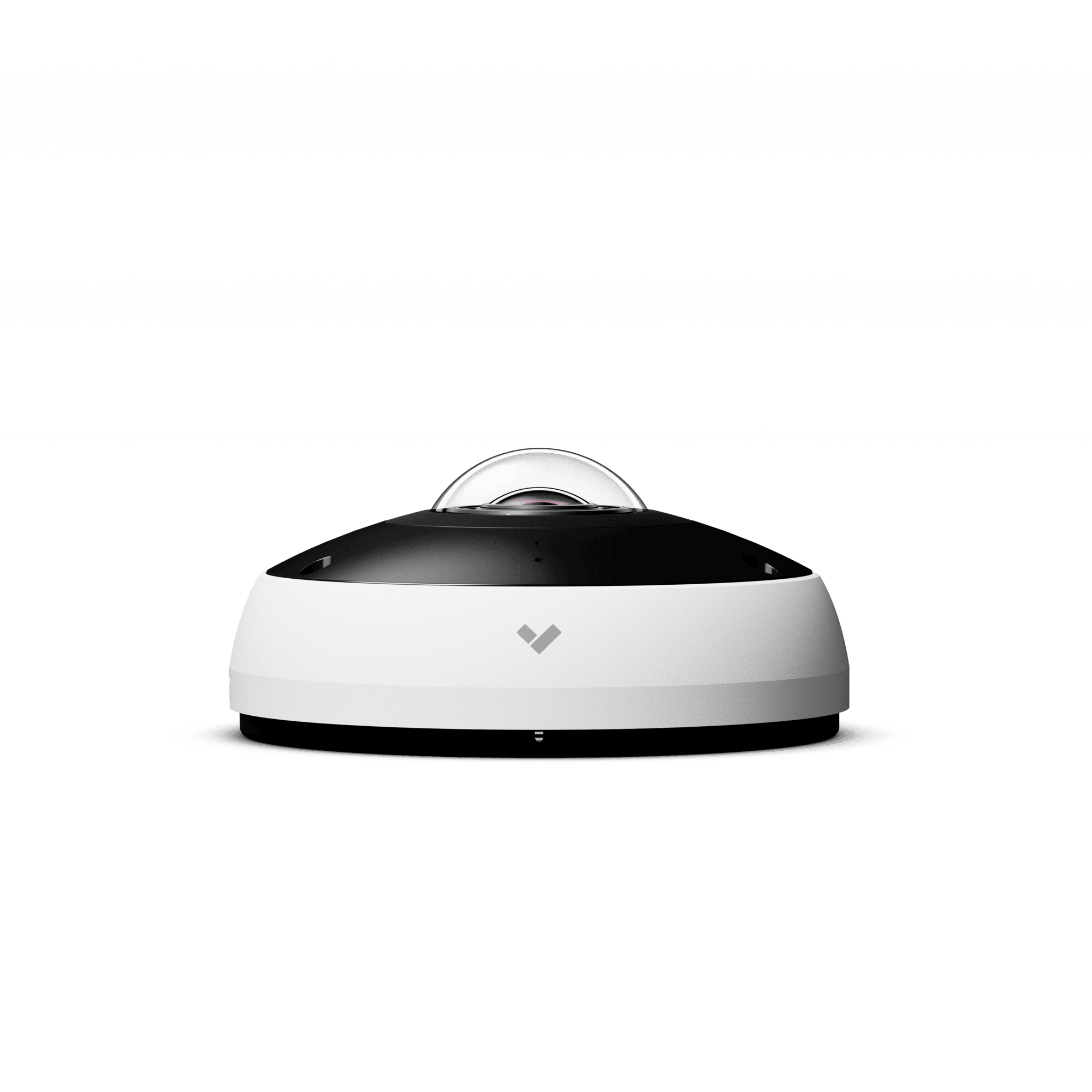
Using sophisticated onboard processing and a wide–angle 12MP image sensor, the CF81-E fisheye camera from Verkada offers dynamic viewing experiences. In fact, there are five different viewing options available to users: panoramic, digital pan-tilt-zoom, 2-way split, 3-way split, and 4-way split.
The CF81-E has an IP67 rating, making it suitable for use in either indoor or outdoor environments. The exterior housing has an impact resistance level of IK10, making it safe from vandalism, hail, and other flying objects. The CF81-E, like all Verkada cameras, can be used straight from the box with no further settings adjustments required. Considering its durability, the fisheye camera is one of the best security cameras.
| Fisheye CF81-E | |
| Type | Indoor and/or Outdoor |
| Image Resolution | 12MP |
| Type of Lens | Fixed, with 3x Digital Zoom |
| Standard Retention | Maximum of 90 Days of Standard Quality Retention |
| Standard Storage | Up to 2TB of Onboard Storage |
| IR Range | 20M |
| Angle of View | 180° |
| Rating | IK10 and IP67 |
| Audio | Yes |
| NDAA Compliant | Yes |
| Analytics | Ambarella Chipset for People and Vehicle Analytics |
| Viewing Modes | Panoramic; Four–Way Split; Pan-Tilt–Zoom |
Three different view modes are supported by the CF81-E. You can customize the view mode to meet the requirements of the install location.
- Four-way split: Use a single camera to watch four distinct fields of view.
- 180° Panoramic: A wide-angle view that is ideal for an open area or a corridor.
- Pan-tilt-zoom (ePTZ): Provides a panoramic, all-encompassing view of your environment
Panoramic
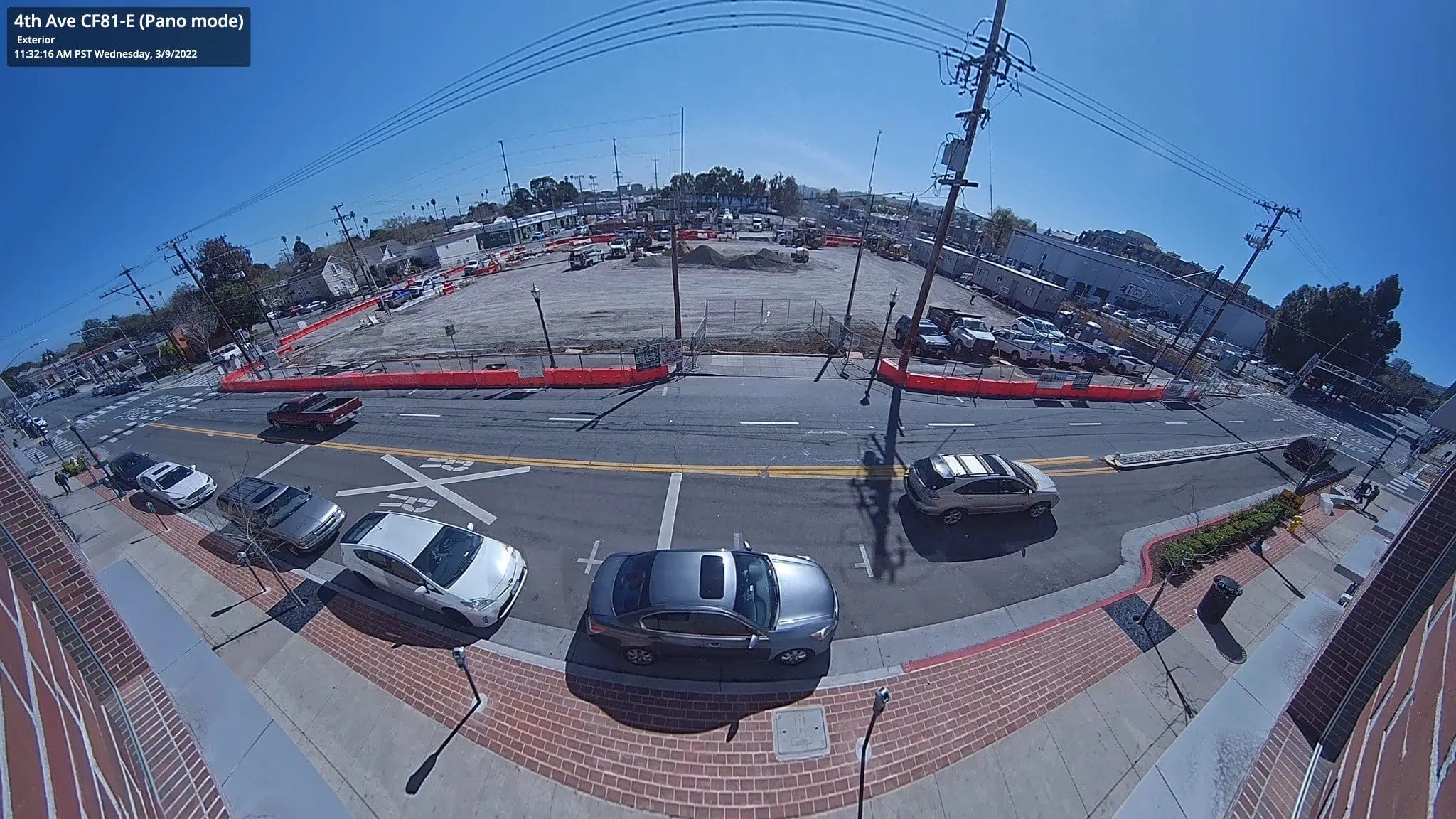
Panoramic is the first view mode of the fisheye camera. The camera will have a 180° horizontal field of view in this mode. The camera can be tilted to adjust the fields of view to your preferences.
Four-Way Split
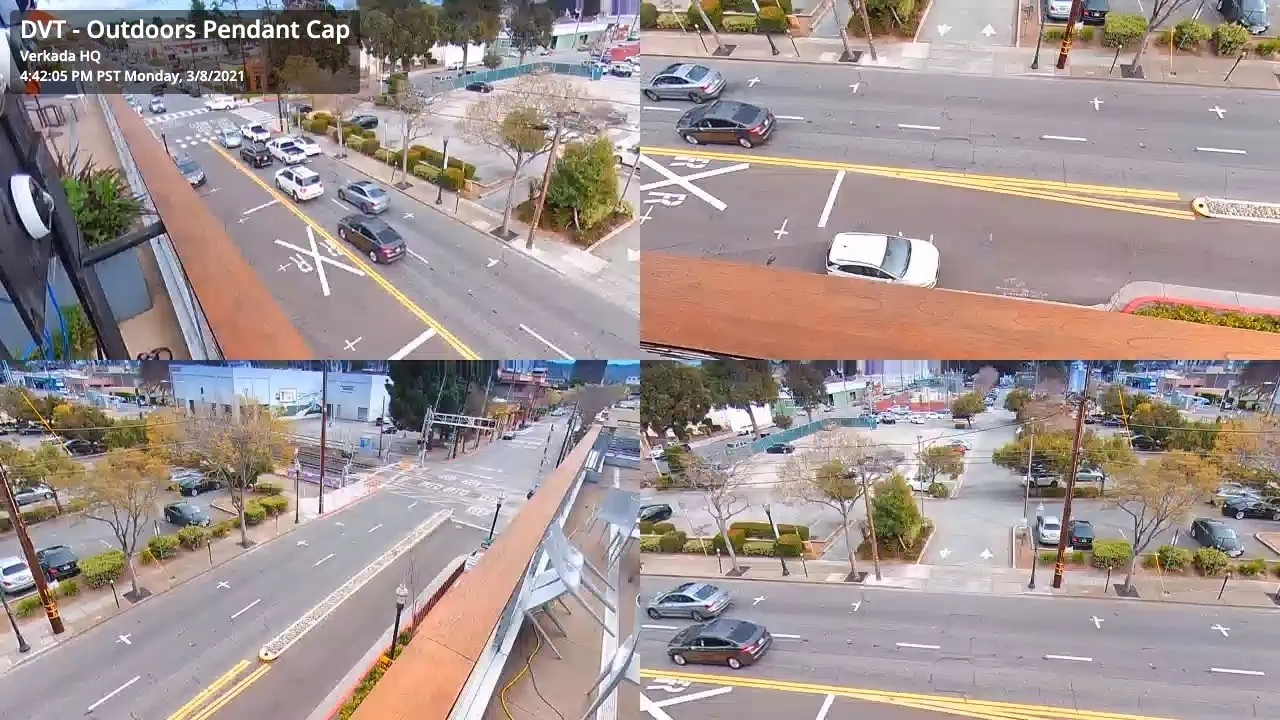
Four-Way Split is the second mode of the fisheye camera. You can monitor four distinct areas all at the same time using the Four-Way Split mode. It’s especially useful for monitoring an outdoor corner, a hallway intersection, or when replacing multiple cameras with one. Job site administrators can adjust the Four-Way Split’s angles to better suit their needs and maximize the fields of view.
Pan-Tilt-Zoom (PTZ)
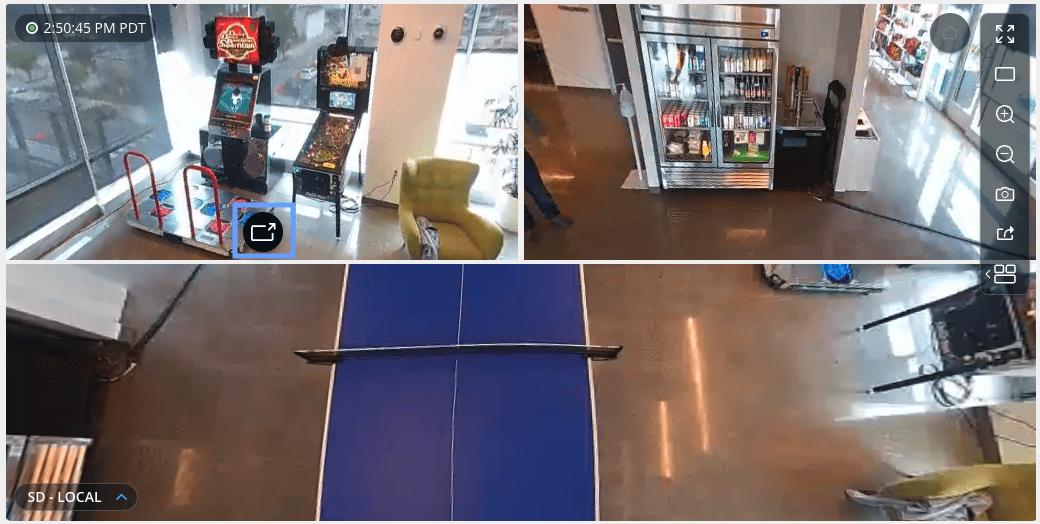
Pan-Tilt-Zoom (PTZ) is the third, adaptable mode of the fisheye camera. You can choose to display the video feed in Pan-Tilt-Zoom as a 360° view, a tiles view with various angles, or by using your digital PTZ functionality to pan, tilt, and zoom around the image.
| 180° Panoramic | Four-way Split | Pan-Tilt-Zoom | |
| Privacy Zones | Y | Y | Y |
| People Counting | Y | Y | – |
| People Analytics | Y | Y | – |
| Vehicle Counting | Y | Y | – |
| Vehicle Analytics | Y | Y | – |
| Crowd Alerts | Y | Y | – |
| Motion Alerts | Y | Y | Y |
| Motion Search | Y | Y | Y |
| Audio | Y | Y | Y |
Is Audio Surveillance Legal in the Workplace: Continuous Security Monitoring
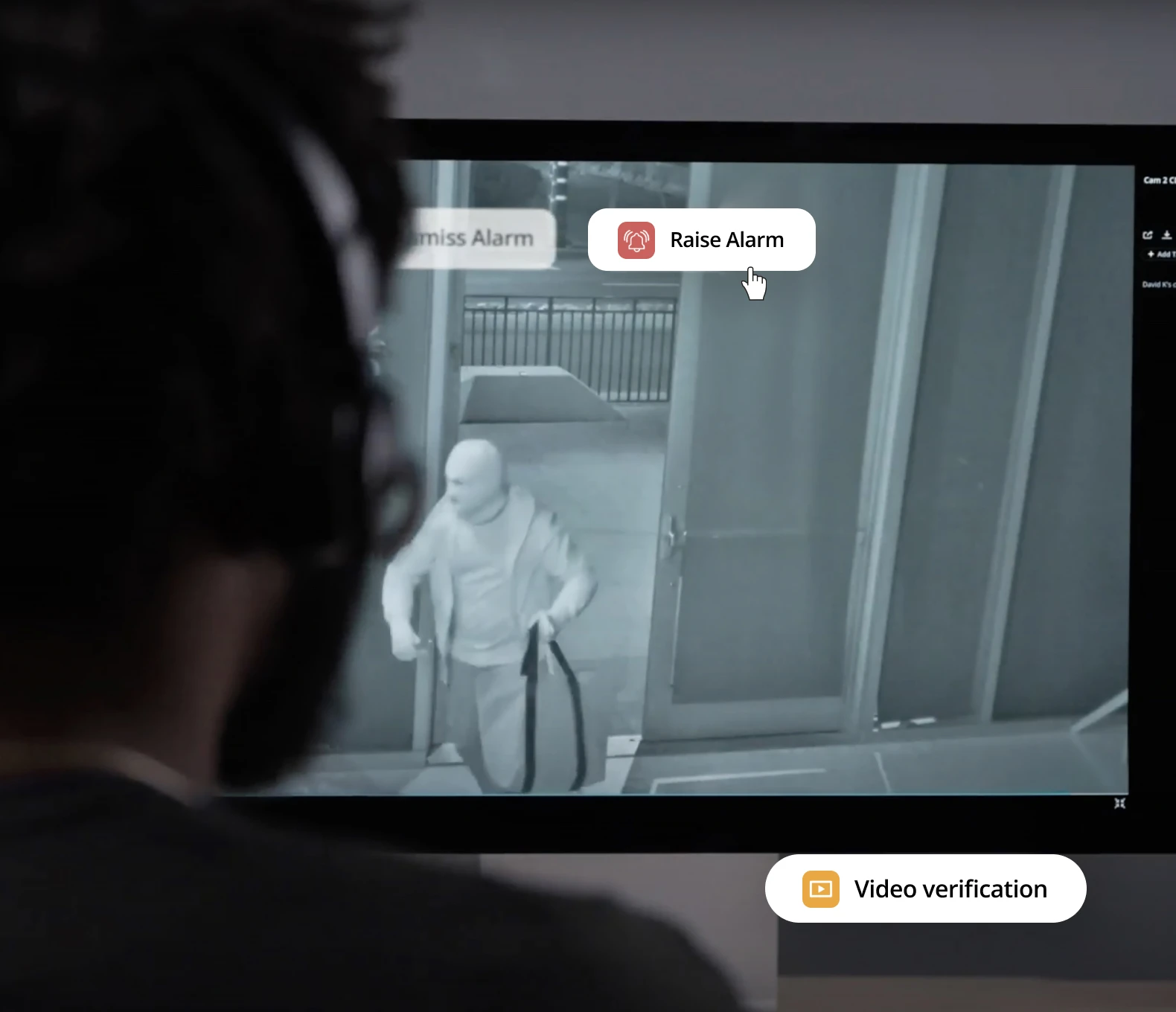
Remote security monitoring is a process that allows security professionals to keep an eye on your property and assets from afar 24 hours a day, seven days a week. There are many benefits of using remote security monitoring for your surveillance system. Some benefits includes deterring crime, catching criminals in the act, providing evidence for criminal prosecution, and peace of mind.
- Deter Theft, Vandalism, and Crime: Security systems with remote security monitoring and audio surveillance can be an effective deterrent to criminals. If potential criminals are aware that their activities are being actively monitored, their likelihood of committing a crime decreases.
- Identify Criminals in Real-time: Remote security monitoring is an important security measure as it can help catch criminals in the act. This type of system provides a proactive approach to security by alerting security personnel to potential risks as they are happening, rather than after the fact.
- Provide Evidence: Remote security monitoring can also provide evidence for prosecution in the event of a crime. This ensures that criminals are apprehended and prosecuted, and it may protect your business from a repeat offense.
- Peace of Mind: Remote security monitoring can provide peace of mind for business owners. Knowing that your property has round-the-clock protection in the event of an emergency can help reduce anxiety and stress levels.
Is Audio Surveillance Legal in the Workplace: People Analytics
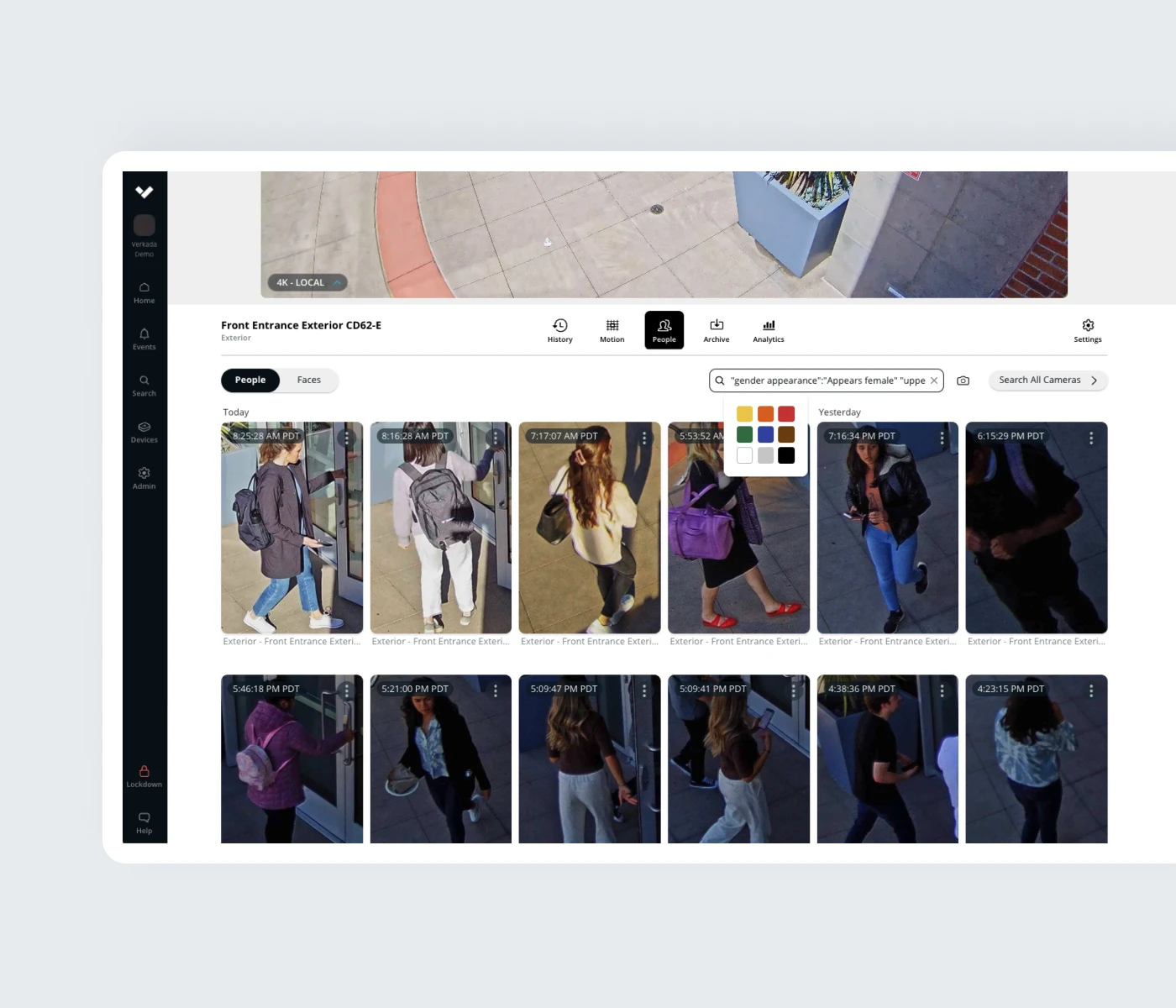
People Analytics combines cloud-based computer vision with intelligent edge-based video processing to give users high-quality images of every person recognized in the scene. Moreover, Verkada’s centralized management platform enables users to filter visitors according to a wide range of criteria, such as time of day, date, appearance, clothing color, backpack detection, and facial matches. Consider the following benefits of Verkada’s People Analytics.
- Face Search
- You can quickly find people who look like a face you already have in your organization. You can also upload an image of a face of a person of interest.
- Occupancy Trends
- Estimate the number of people who cross a customizable digital line on a video feed.
- Keep track of how a space is being used in order to improve business operations.
- Person History
- Search through high-resolution snapshots of people detected in the frame.
- Save screenshots or easily access associated high-resolution video.
- Examine Anywhere
- People Analytics is accessible from any device and from virtually any location in the world.
- Filters for Attributes
- Filter by a variety of criteria, such as clothing color, gender appearance, and facial matches.
- Cross Camera Tracking
- Quickly identify people of interest or potential suspects across all cameras at all sites.
- Record and export multiple angles of a person to provide evidence quickly.
Is Audio Surveillance Legal in the Workplace: Conclusion

In conclusion, audio surveillance in the workplace is generally legal in the United States, but there are some federal and state laws that regulate it.
The Electronic Communications Privacy Act (ECPA) prohibits the interception of electronic communications without the consent of at least one of the parties to the communication, but there are exceptions for business purposes. State laws may also regulate audio surveillance, and may be more or less restrictive than the ECPA.
Employers should be aware of both federal and state laws and ensure that they are in compliance when it comes to audio surveillance in the workplace. It is also important for employers to have a legitimate business purpose for the surveillance, to obtain the consent of all parties if possible, and to give notice to employees if required by law.
By following these guidelines, employers can ensure that audio surveillance in the workplace is done legally and ethically.
Updated: Jan 9
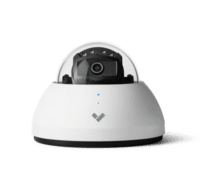
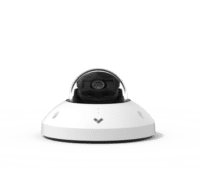
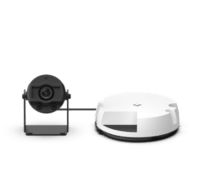
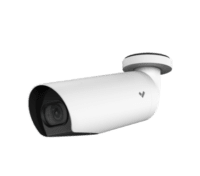
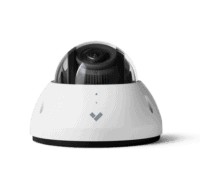
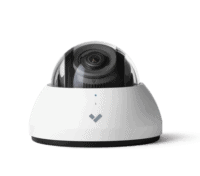
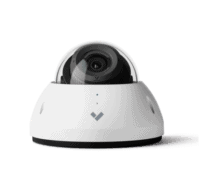
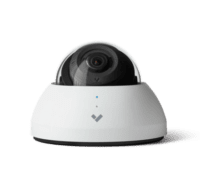
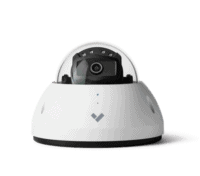

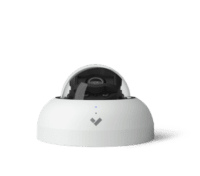
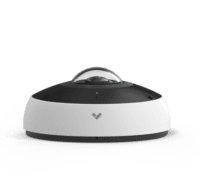
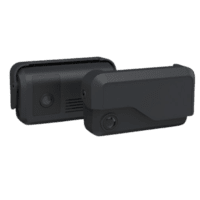
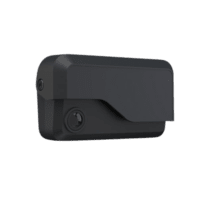
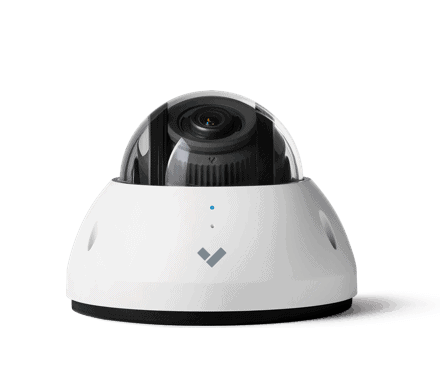 Jon Jones
Jon Jones


